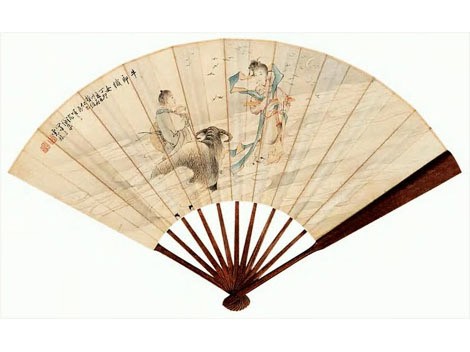

The fairy tale of the Cowherd and the Weaving Girl is one of the four most famous folktales of ancient China. It is a classic love story between a fairy and a human being and has a widespread influence. The Qixi Festival is said to have something to do with the fairy tale. Naturally, the seventh day of every seventh month of the lunar calendar has become Chinese Valentine's Day.
The tale of the Cowherd and the Weaving Girl is a love story between the Cowherd, a human being, and the Weaving Girl, a fairy. They fall in love with each other, get married, forced to separate and blocked by the Milky Way. Out of compassion for them, on the seventh day of the seventh lunar month each year, flocks of magpies fly to form a bridge with their bodies over the Milky Way, allowing the Cowherd and the Weaving Girl to meet each other. This story, to some extent, reflects Chinese people's wishes to pursue the freedom of love and marriage.
The fairy tale of the Cowherd and the Weaving Girl has made the Qixi Festival the most romantic traditional Chinese festival. Countless poems in Chinese history are in praise of the story, the most famous works being the ancient poem of the Han Dynasty Far in the Skies Is the Cowherd Star, Qixi by Du Mu of the Tang Dynasty and Fairy On the Magpie Bridge by the great ci writer Qin Guan of the Song Dynasty. In addition, traditional Chinese operas like Beijing Opera and Shaanxi opera etc have plays about the Cowherd and the Weaving Girl.
The fairy tale also contains Chinese people's understanding about star images. In the tale, the Weaver Girl Star (the Vega) is the brightest star in the constellation Lyra, facing the Cowherd Star (the Altair), the brightest star in the constellation Aquila, across the Milky Way.
The Chinese fairy tale of the Cowherd and the Weaving Girl can be seen as a story enjoying equal importance as the Greek myths of Odyssey, Jason, the Argonauts and the Golden Fleece and the ancient European legend of The Ring of the Nibelung etc. On the seventh day of the seventh month of the lunar calendar every year, Chinese women customarily look up into the night sky, searching for the Weaver Girl Star and the Cowherd Star on both sides of the Milky Way and hoping to see their annual gathering. Meanwhile, girls on the ground hope to have clever hands and good sense, just like the Weaving Girl. They also pray for a happy marriage of their own. Thus, the Qixi Festival has been entrenched in Chinese culture.

Presented by Chinadaily.com.cn Registration Number: 10023870-7
Copyright © Ministry of Culture, P.R.China. All rights reserved